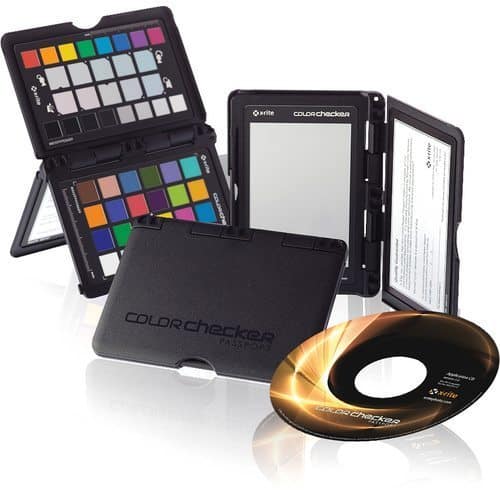Today I’m going to take you through some of the basic operations of the X-Rite ColorChecker Passport.
With the preparation for my Snow Monkeys and Hokkaido Workshops, I really didn’t have time to prepare for a Podcast this week, but I had planned on talking about my new X-Rite ColorChecker Passport, which I have fallen head over heals in love with! Having prepared screen shots and everything, I figured it was probably going to take longer to prepare an audio Podcast and accompanying blog post with the screenshots, than it would take for me to just create a video and show you it all in real-time.
Here is the video. I’ll try to upload an iTunes and maybe also an iPhone version before I leave for the workshops, but for now, this is it. Don’t forget you can click the little full-screen icon to the right in the toolbar to view the video in full-screen mode.
You can also get an iPhone optimized version of this video in iTunes, or download it here.
I’ve also just bought an X-Rite ColorMunki Photo, which I’ll also be reviewing soon.
If you are thinking of buying one yourself, you can pick up an X-Rite ColorChecker Passport from B&H.
You can also buy the X-Rite ColorMunki Photo kit here.



Thanks for the Color Checker review. I started to check it out and see if it would work for my workflow. I use Capture One for raw processing and want to find out how the Passport worked with it. I found some vague references to Capture One and some basic Capture One tutorials (white balance and adjustment copying). I was not able to find anything about how the Passport software worked with Capture One. I wrote to the Customer Support department at XRite. I received a reply that was useless. I replied and gently called them out and asked them to definitively reply to my questions.
They confirmed that the Color Checker Passport (and software) is ONLY intended to be used with Adobe products that utilize DNG profiles. It is mostly useless for anything else with the exception of setting your white balance ($90+ for a white card?). I’d bet you aren’t aware of this restriction as it’s not obvious from their documentation and even their customer support is confused (hopefully not deceptive). This is most definitely only a DNG profile (Adobe) product.
Thanks for the podcast,
PCH
Martin, great podcast watched it on my way to work. I never realised how important creating the right profile for the right camera and the right conditions really were.
Now my only problem is finding a price and a supplier in Australia that I can buy one from.
Keep up the excellent work, I really enjoy your podcasts.
Regards
Michael…
Thanks for the comments Peter and Michael!
Peter, actually I would say it’s pretty obvious from there documentation, in that they clearly state that this tool is to create custom DNG/Camera profiles for use with Adobe Camera RAW or Lightroom. I would have ruled out Capture One from the start, as it uses it’s own RAW processing engine. I agree that it would be nice to expand the usefulness of the product by supporting other RAW processing engines. Maybe that will come at some point down the road.
Michael, I know that they are available in Australia as a friend of mine has talked with the distributor there. If you are having trouble finding these Passports in Aus, let me know and I’ll hook you up.
Cheers,
Martin.
wow, just one word, horrible!